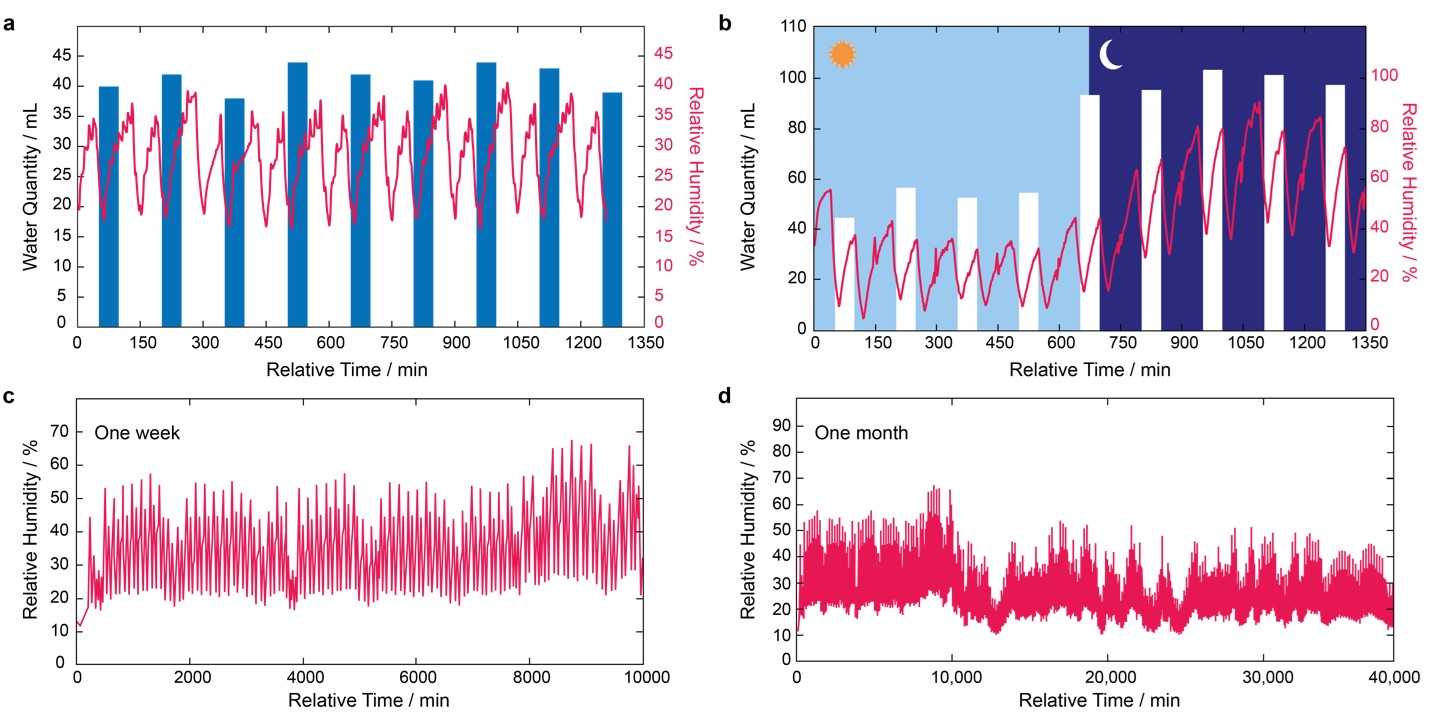Harvesting water vapor from desert, arid environments by metal-organic framework (MOF) based devices to deliver clean liquid water is critically dependent on environment and climate conditions. However, reported devices have yet been developed to adapt in real-time to such conditions during their operation, which severely limits water production efficiency and unnecessarily increases power consumption. Herein, we report and detail a mode of water harvesting operation, termed ‘adaptive water harvesting’, from which a MOF based device is proven capable of adapting the adsorption and desorption phases of its water harvesting cycle to weather fluctuations throughout a given day, week, and month such that its water production efficiency is continuously optimized. In performance evaluation experiments in a desert, arid climate (17–32% relative humidity), the adaptive water harvesting device achieves a 169% increase in water production (3.5 LH2O kgMOF −1 d−1) when compared to the best-performing, reported active device (0.7–1.3 LH2O kgMOF −1 d−1 at 10–32% relative humidity), a lower power consumption (1.67–5.25 kWh LH2O−1), and saves time by requiring nearly 1.5 cycles less than a counterpart active device. Furthermore, the produced water meets the national drinking standards of a potential technology-adopting country, Jordan.

Adaptive water harvesting stress tests for a day, week, and month in real desert, arid environments. (A) Stress test for 24 h performed under a controlled environment (20% RH and 25 C). The adaptive device is consistent in water production without loss in performance. (B) Real-environment performance evaluation for one full day demonstrating adaptive performance as a function of day-night fluctuations in climate conditions. (C) Real-environment continuous performance for one week. (D) Monitoring the condensation compartment response to demonstrate the adaptive device’s performance for one month of continuous operation. All data was collected on the adaptive device after it had performed >1000 cycles, which is equivalent to ca. 1 year of operation.
For more details, see in Nature Communications | ( 2022) 13:4873:
https://doi.org/10.1038/s41467-022-32642-0

